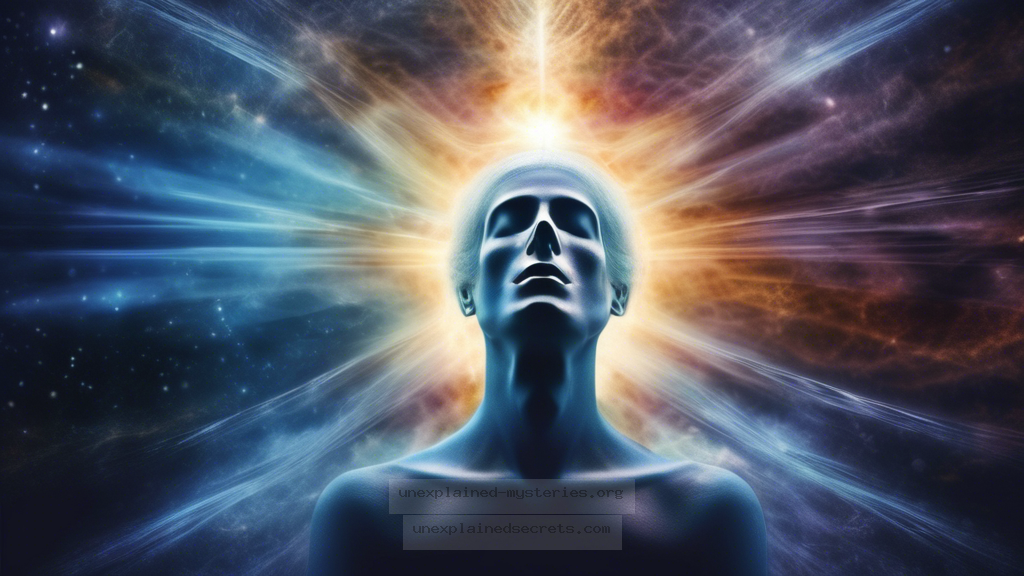What Happens to Consciousness During Near-Death Experiences, and Can It Provide Evidence of Life After Death?
What Happens to Consciousness During Near-Death Experiences, and Can It Provide Evidence of Life After Death?
The phenomenon of Near-Death Experiences (NDEs) has intrigued researchers, spiritual seekers, and skeptics alike for decades. As individuals recount their experiences of perceived consciousness when their physical body is clinically dead or near death, a compelling question arises: Does this suggest the existence of consciousness beyond the physical realm? The exploration of NDEs is not just a scientific inquiry but also a profound spiritual journey that can reshape our understanding of life, death, and what may lie beyond.
Understanding Near-Death Experiences
Near-Death Experiences often occur in life-threatening situations, such as cardiac arrest, severe trauma, or other medical emergencies. Individuals report a variety of experiences that can include sensations of floating, seeing bright lights, encountering deceased loved ones, or feeling a sense of peace and detachment from their physical bodies. While the specifics of each experience can vary significantly, many individuals report similar themes, leading researchers to study these phenomena in depth.
Dr. Raymond Moody, a pioneer in NDE research, first popularized the term in his 1975 book, “Life After Life.” He documented numerous cases and outlined common elements of NDEs, such as the “life review,” where individuals report seeing their life events replayed, and the overwhelming feelings of love and acceptance. These reports raise questions about the nature of consciousness and whether it persists beyond physical death.
The Historical Context of NDEs
The concept of NDEs is not a modern phenomenon. Historical accounts of similar experiences can be traced back to ancient civilizations, such as the Egyptians and Greeks, who believed in an afterlife and the continuation of the soul. In more recent history, literature and religious texts have documented accounts resembling modern NDEs, suggesting that the phenomenon transcends cultural and temporal boundaries.
In the 19th century, the advent of spiritualism led to increased interest in the afterlife and communication with the deceased. This movement paralleled the development of the medical field, which began to better understand the human brain and consciousness. As medical science progressed, so did the interest in the nature of consciousness itself, culminating in the contemporary studies of NDEs that bridge science and spirituality.
Core Concepts and Theories Surrounding NDEs
Several theories have been proposed to explain NDEs, ranging from neurological responses to profound psychological experiences. Some of the prominent theories include:
- Physiological Responses: Many scientists propose that NDEs are the result of brain activity during trauma. Hypoxia (lack of oxygen) and hypercapnia (excess carbon dioxide) can lead to hallucinations, altered perceptions, and feelings of euphoria.
- Psychological Coping Mechanism: Some psychologists suggest that NDEs may be a defense mechanism of the mind, helping individuals cope with the traumatic experience of dying.
- Spiritual Perspective: Many who have had NDEs describe profound spiritual awakenings, suggesting the possibility of consciousness existing independently of the body.
Each of these theories offers a unique lens through which to examine NDEs, underscoring the complexity of consciousness and the mysteries of human experience.
Documented Cases of Near-Death Experiences
There are countless documented cases of NDEs that provide compelling narratives. One notable example is the story of Dr. Eben Alexander, a neurosurgeon who experienced a profound NDE while in a coma due to a severe bacterial meningitis infection. During his coma, he reported a vivid experience in which he encountered a divine presence and felt an overwhelming sense of love. Dr. Alexander’s account challenges the conventional understanding of consciousness and raises profound questions about the nature of reality and existence.
Another prominent case is that of Anita Moorjani, who, after battling cancer, had a near-death experience that transformed her understanding of life and death. Moorjani describes a sense of unconditional love and acceptance, leading her to a miraculous recovery. Her story has inspired many and adds to the growing body of evidence suggesting that NDEs can provide insights into the nature of consciousness.
Scientific Research and Evidence
Numerous studies have been conducted to investigate NDEs scientifically. Research from institutions such as the University of Virginia and the International Association for Near-Death Studies has attempted to gather empirical data on these experiences. A key finding is the consistency of NDE reports across different cultures and backgrounds, suggesting a universal aspect of these experiences.
In one notable study published in the journal “Resuscitation,” researchers investigated the experiences of cardiac arrest patients. They found that a significant number reported vivid memories and sensations during the period when their hearts had stopped. This challenges the assumption that consciousness ceases completely when clinical death is declared, indicating a more complex relationship between consciousness and physical existence.
Alternative Perspectives on NDEs
While many embrace the idea of NDEs as evidence of an afterlife, others remain skeptical. Some researchers argue that these experiences can be explained through biological and psychological lenses. For example, the brain’s natural response to trauma can produce vivid hallucinations, and these experiences may merely reflect the mind’s coping mechanisms in the face of death.
Moreover, critics often emphasize the need for more rigorous scientific methodologies in studying NDEs. Skeptics urge caution in interpreting anecdotal evidence and highlight the importance of distinguishing between subjective experiences and objective reality.
Common Misconceptions About Near-Death Experiences
There are several misconceptions surrounding NDEs that can cloud understanding:
- NDEs Are Always Positive: While many report blissful experiences, some individuals recount distressing or negative encounters during their NDEs, often referred to as “hellish” experiences.
- All NDEs Are the Same: Though there are common themes, the details of NDEs can vary widely among individuals, influenced by cultural, religious, and personal beliefs.
- NDEs Prove Life After Death: While many interpret NDEs as evidence of an afterlife, skeptics argue that they do not constitute definitive proof of consciousness existing beyond the brain.
Best Practices for Investigating NDEs
For those interested in exploring NDEs further, several best practices can enhance understanding:
- Engage with Diverse Perspectives: Read both scientific and spiritual accounts to gain a comprehensive view of NDEs.
- Participate in Research Studies: Consider joining organizations dedicated to the study of NDEs, such as the International Association for Near-Death Studies.
- Attend Lectures and Conferences: Engage with experts in the field to learn about the latest research and findings.
By combining personal exploration with scientific inquiry, individuals can develop a more nuanced understanding of NDEs and their implications for consciousness.
Future Developments in NDE Research
The field of NDE research is continually evolving, with advances in neuroscience and psychology paving the way for deeper insights. Emerging technologies, such as brain imaging, may provide new avenues for examining the phenomena associated with NDEs. Furthermore, interdisciplinary collaboration between scientists, philosophers, and theologians could lead to a more holistic understanding of consciousness and its potential survival after death.
As more individuals share their NDE stories and researchers continue to investigate these experiences, the dialogue surrounding consciousness, spirituality, and the afterlife will undoubtedly expand. Future studies may also explore the impact of NDEs on personal transformation and how these experiences influence beliefs about death and what lies beyond.
Conclusion
The question of what happens to consciousness during Near-Death Experiences remains one of the most profound mysteries of our time. While many interpretations exist—from physiological explanations to spiritual revelations—the consistency and depth of NDE accounts challenge our understanding of consciousness and its potential to exist beyond the physical realm.
Through the exploration of documented cases, scientific research, and alternative perspectives, we begin to unfold the complexities surrounding NDEs. As we continue to engage with this fascinating topic, it invites us all to reflect on our beliefs about life, death, and what may lie beyond the veil of existence. Whether one views NDEs as a gateway to the afterlife or a product of the brain’s response to trauma, they undeniably provoke deep contemplation about the nature of our consciousness and our enduring quest for understanding. ✅
Other Articles
Recent Posts
- What Happened to Flight MH370? The Conspiracy Theories That Still Haunt Us
- What Secrets Lurk Within the Walls of the Infamous Trans-Allegheny Lunatic Asylum?
- What Evidence Supports the Existence of Bigfoot in the Pacific Northwest?
- What Happened to the Indus Valley Civilization? Unraveling the Mysteries of Ancient Urban Life
- Can Telepathy Be Scientifically Proven Through Laboratory Evidence?







